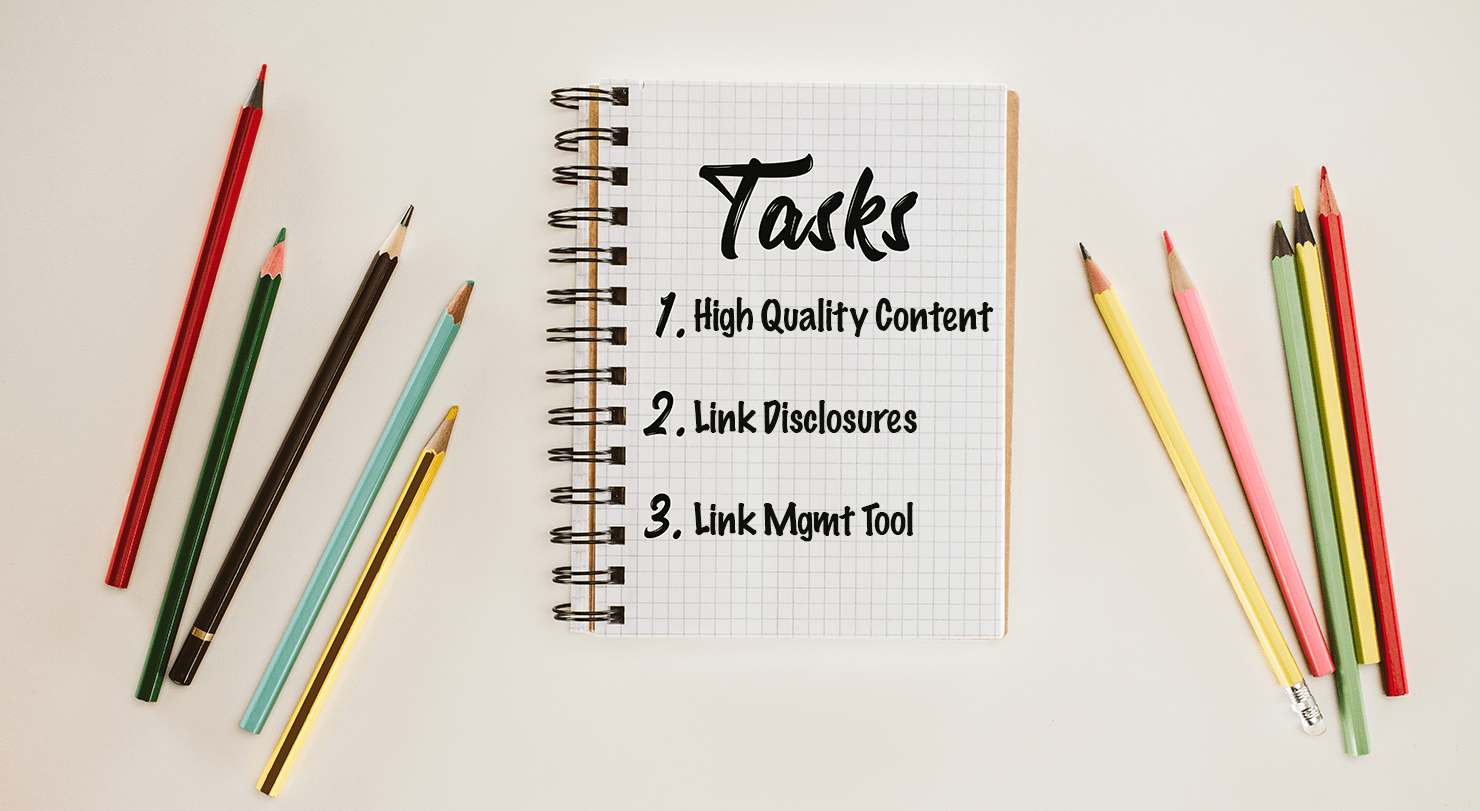Contents
There’s no doubt that affiliate marketing can be a lucrative income stream. However, you can’t jump right in and begin adding affiliate links to your website with no regard for best practices or user experience (UX). In order to prepare your blog, there are certain tasks you need to complete before you start.
These tasks – ranging from content quality control to finding the perfect link management tool – can ensure you make the right moves for your affiliate business from the start.
They’ll also protect you from any legal troubles (the FTC regulates linking practices) and ensure you’ve got all the kinks worked out, so your website can maintain its credibility.
In this post, we’ll outline three tasks to complete before adding affiliate links to your blog. We’ll also show you how to carry out each one effectively. Let’s get started!
1. Write Targeted and High-Quality Content

It might sound obvious, but the content on your blog needs to draw in your target audience. However, it will only work if it’s properly targeted and high quality. This content also aids in your affiliate marketing efforts, as it makes it easier to add links that fit into your content. You should also avoid writing content just to squeeze in affiliate links, as the quality will suffer.
Producing high quality content also enables you to establish a relationship with your audience, which will make it easier to incorporate affiliate links later on. Fortunately, writing targeted and high-quality content is easy to do if you’re careful. The most important aspect is that it’s readable, which means creating a skimmable structure (such as with headings, bullet points, and short paragraphs), and being direct.
You should also take the time to do keyword research. By using niche-focused keywords in your posts, you make it easy to find places to incorporate your affiliate links naturally.
Once your blog is established, you can use your own most popular posts for inspiration. Analyze them to see what you did right within those posts, and consider how can you incorporate those approaches into future ones.
2. Add Link Disclosures Throughout Your Website

In short, link disclosures are statements on your website that alert readers to the presence of affiliate links. These are legally required by the Federal Trade Commission (FTC), as they ensure fair business practices.
By adding link disclosures to your website, you offer complete transparency to your readers. This is essential for building trust, but it’s also crucial if you want to avoid legal ramifications. To ensure you use disclosures effectively, you should make sure to place them prominently.
This could be at the top of blog posts, and within the text itself. For example, you could place an asterisk next to the link and repeat the disclosure at the bottom of the post.
You also need to use clear, direct language. This includes using trigger words (such as “compensation” and “commission”), and keeping the disclosure short and to the point. Make sure you’re proactive in disclosing by including them on each page that affiliate links appear, and mentioning any other instances of payment, such as sponsored posts and paid reviews.
3. Find the Perfect Link Management Tool

With so many links on your website, it’s necessary to have a way of managing them efficiently. One way to do so is with a link management tool, such as our very own PrettyLinks plugin.
Such a tool streamlines your link management tasks, which gives you time to spend on other business tasks. It can also provide you with numerous features that are particularly beneficial in affiliate marketing, such as link tracking and redirection.
To find the perfect link management tool, consider what features you’ll need. For example, if you need tracking, conversion reports, and dynamic redirection options, then a premium tool like PrettyLinks will be your best choice.
Conclusion
While adding affiliate links to your website can bring in a considerable profit, it’s not something to do carelessly. By failing to prepare, you could set yourself up for legal fines and even a loss in traffic, since unprofessional linking practices will harm your credibility.
In this post, we’ve discussed three tasks to perform before you add affiliate links to your blog. These tasks ensure a smooth transition for both you and your audience. To quickly recap, they’re:
- Write targeted and high-quality content.
- Add link disclosures throughout your website.
- Find the perfect link management tool (such as PrettyLinks).
Do you have any questions about affiliate links, or how PrettyLinks can help? Let us know in the comments below!









Leave a Reply